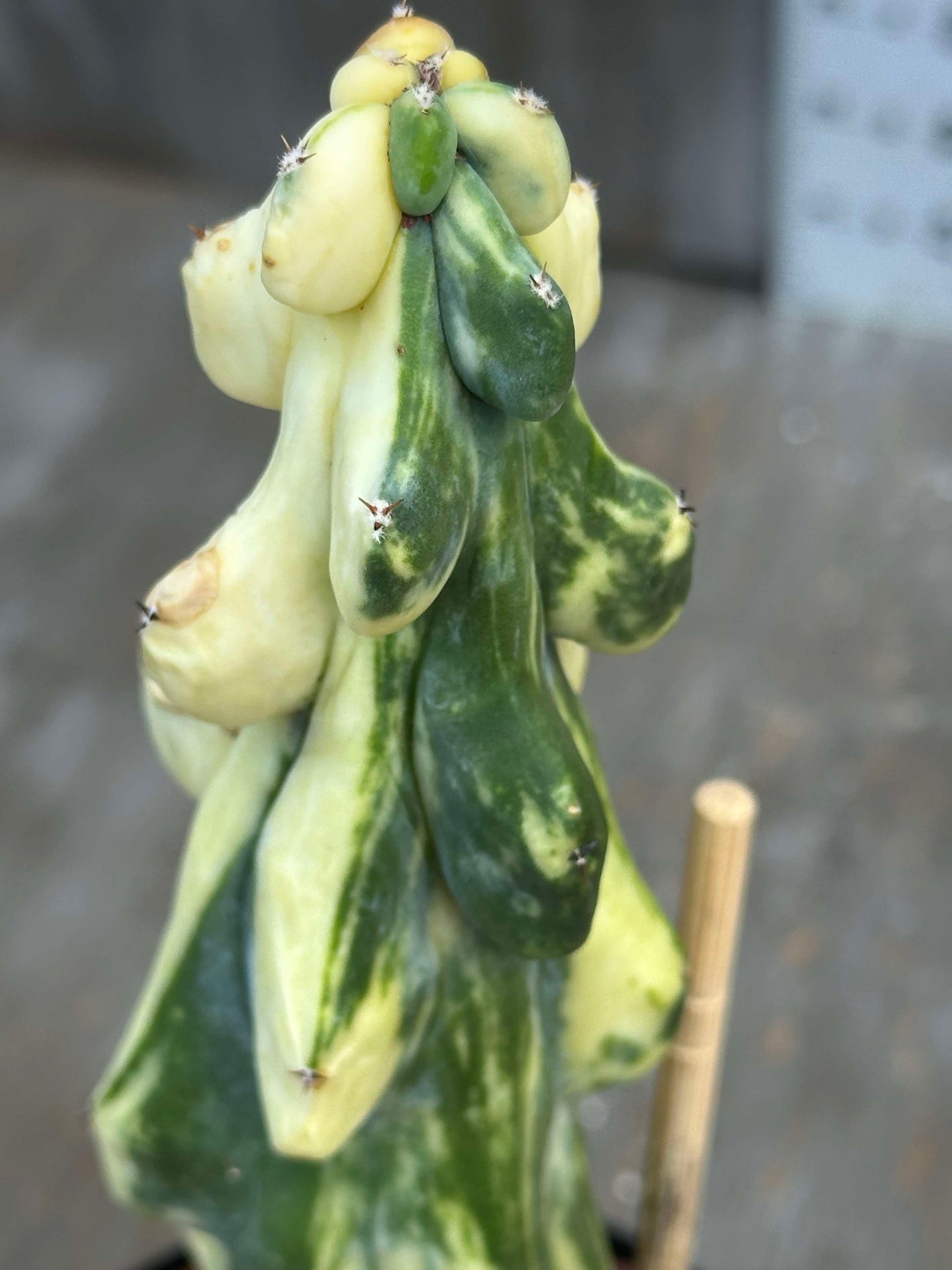Myrtillocactus Geometrizans cv. 'Fukurokuryuzinboku' Variegated (MGFV1) 🌱
Myrtillocactus Geometrizans cv. 'Fukurokuryuzinboku' Variegated (MGFV1) 🌱
Extremely rare Myrtillocactus geometrizans cv. 'Fukurokuryuzinboku' variegated in a 4-inch pot.
Myrtillocactus geometrizans 'Fukurokuryuzinboku,' commonly known as the "boobie cactus," is a Japanese cultivar of the Blue Candle Cactus. This rare and sought-after variant is characterized by its unusual growth pattern, which includes ribs that resemble the rounded shapes of female anatomy. Unlike its standard counterpart, this monstrose form does not produce true-to-type seeds and is typically propagated through cuttings. The plant's flowers are small and greenish-white, contrasting with its distinctive ribbed appearance. Despite its unusual form, care for this cultivar is similar to that of the regular Myrtillocactus geometrizans.
*The plant pictured is the plant that you will receive. By purchasing, you agree to our Shipping Policy and Refund Policy.*
Couldn't load pickup availability
Myrtillocactus Genus
Myrtillocactus Genus
Myrtillocactus is a genus of cacti native to Central Mexico and extending into Guatemala, recognized for its distinctive columnar and shrub-like growth habit. The plants are commonly characterized by their blue-gray flesh, which can turn green in shaded conditions. The genus typically features three to five spines per areole, though some may have up to nine.
Myrtillocactus species are adapted to dry scrub lands and tropical deciduous forests, generally found at altitudes between 3,000 and 6,000 feet. The genus includes four recognized species, the most popular in cultivation being the famed geometrizans 'Fukurokuryuzinboku' aka the "Booby cactus".
Myrtillocactus Care
Myrtillocactus Care
Myrtillocactus do best in bright, direct sunlight and with well-draining soil to prevent root rot. This cactus prefers a warm environment, ideally with temperatures between 70-85°F (21-29°C) during the growing season. Water sparingly, allowing the soil to dry out completely between waterings, and reduce watering in the winter months.
While it can tolerate a range of light conditions, lower light can result in slowed growth and a loss of its characteristic blue-gray hue. Myrtillocactus is relatively low-maintenance and benefits from occasional feeding with a balanced cactus fertilizer.
Share


